Manteo is a quaint town on Roanoke Island in North Carolina. It’s the perfect spot for whatever angling extravaganza you have in mind. It sits between the productive hunting grounds of the Atlantic Ocean and the Albemarle Sound, so fishing in Manteo almost never disappoints.

In this guide, we’ll delve into what you can expect from the town’s waters, no matter where you go. Whether it’s the Roanoke and Croatoan Sounds, the Oregon Inlet, or the deep blue waters of the ocean – you’re never too far from a potential trophy. In the world of fishing, some places promise a catch, while Manteo promises a story.
Let’s delve into Manteo’s fish species, productive spots to wet a line and battle with something big and tasty, and discuss the best times to visit. Who knows? You might choose Manteo for your next angling adventure. You won’t regret it.
What can I catch while fishing in Manteo?
Manteo’s fishing grounds are pretty diverse. There are two sounds –the Croatan and Roanoke – along with the Oregon Inlet just a short boat ride away. Plus, there’s the mighty Gulf Stream with its bluewater game species. It’s safe to say that the menu across all the fishing zones in Manteo can make any angler happy!
Inshore
Inshore fishing in Manteo is as diverse as it gets, be it in the sounds or around the inlet. The waters are calm, providing shelter to an array of spectacular fish species. While it’s hard to name them all, let’s talk about two of the most popular inshore catches that are both challenging and rewarding to catch…
Redfish
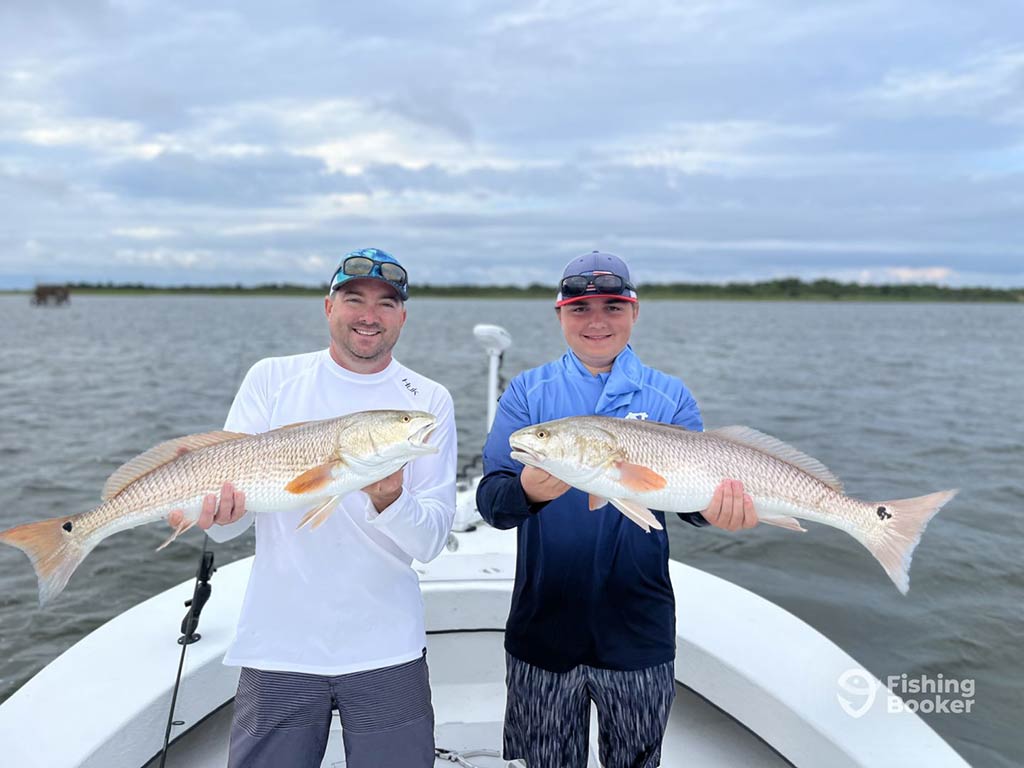
Redfish, also known as Red Drum, Channel Bass, and Puppy Drum, are among the most iconic and sought-after inshore species in the country, and Manteo is no exception. Anglers look for them in brackish waters, around the grassy flats of hotspots like the Oregon Inlet. When the conditions allow, you can target “Bull” Redfish and even try to break the current state record.
As with the majority of fish species, the North Carolina Division of Marine Fisheries (NCDMF) has strict regulations that apply to Redfish fishing in Manteo. Anglers can keep one Red per day, and the fish must be between 18 and 27 inches. If you land a smaller or a bigger Red, make sure to release it back into the water.
Spotted Seatrout
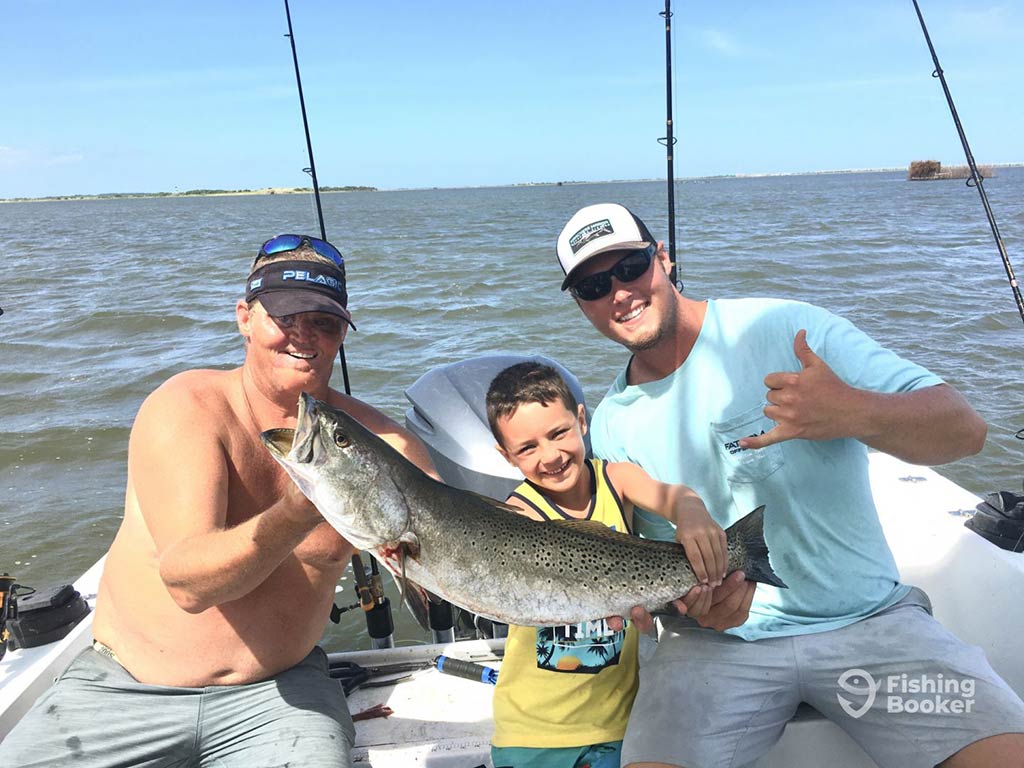
Whatever you call it, be it Spotted Seatrout or Speckled Trout, these elusive fish are among the top catches around. Light tackle anglers look for them around the Roanoke Sound, although the marshy inlets of the Albemarle Sound are also pretty productive.
While there are size and bag limits for these creatures, they’re pretty generous. You’re allowed to keep up to four fish per person with a minimum size of 14 inches. The bigger, the tastier!
Nearshore
Hop on a boat and head a little further out, and the list of your potential catches suddenly becomes much bigger. Manteo’s nearshore waters teem with some thrilling species, including Cobia, King Mackerel, Seabass, and more. Here are some of the most exciting targets that offer a combination of sport and taste:
Cobia
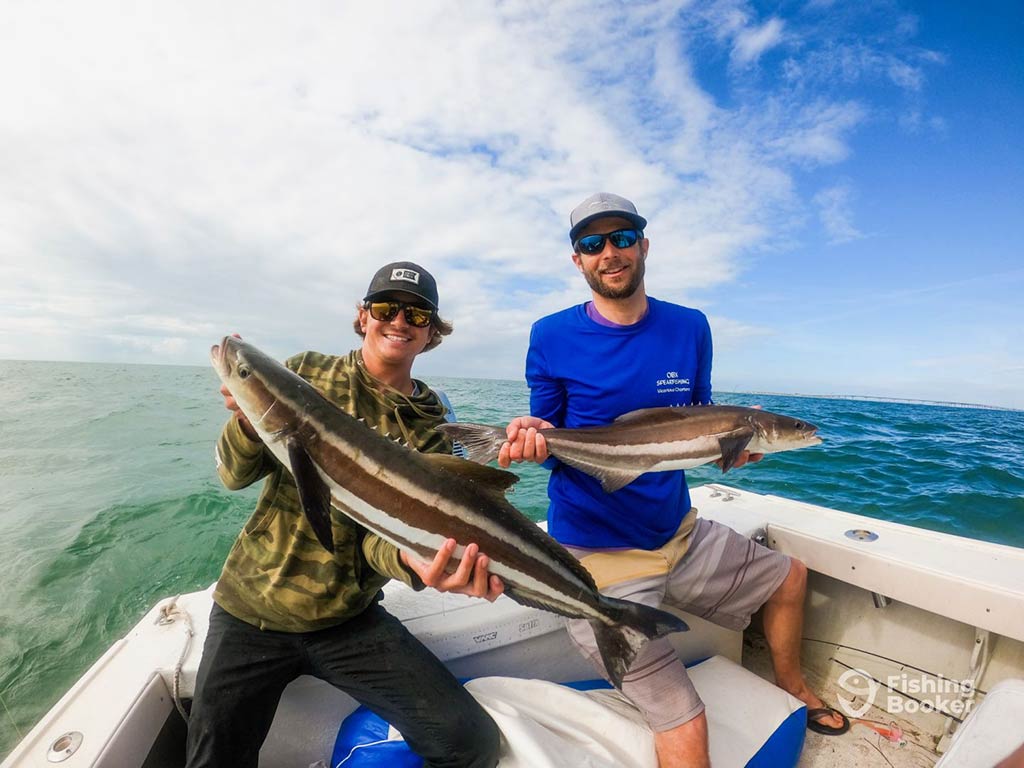
Cobia fishing is especially productive around Oregon Inlet. When the season and the conditions allow, these fish become a popular catch among nearshore anglers. Sight fishing is the go-to technique here, especially if you mix it with a little bit of chumming. Here’s a local tip: Cobia are known to follow turtles and rays, which is a pretty incredible sight and can help you spot the fish.
Regulations-wise, the NCDMF sets minimum size and bag limits each year. You’ll need to consult with the Cobia DMF proclamation before you head out. Typically, you can keep one fish per person or four fish per vessel, although it’s never a bad idea to check with your guide.
King Mackerel
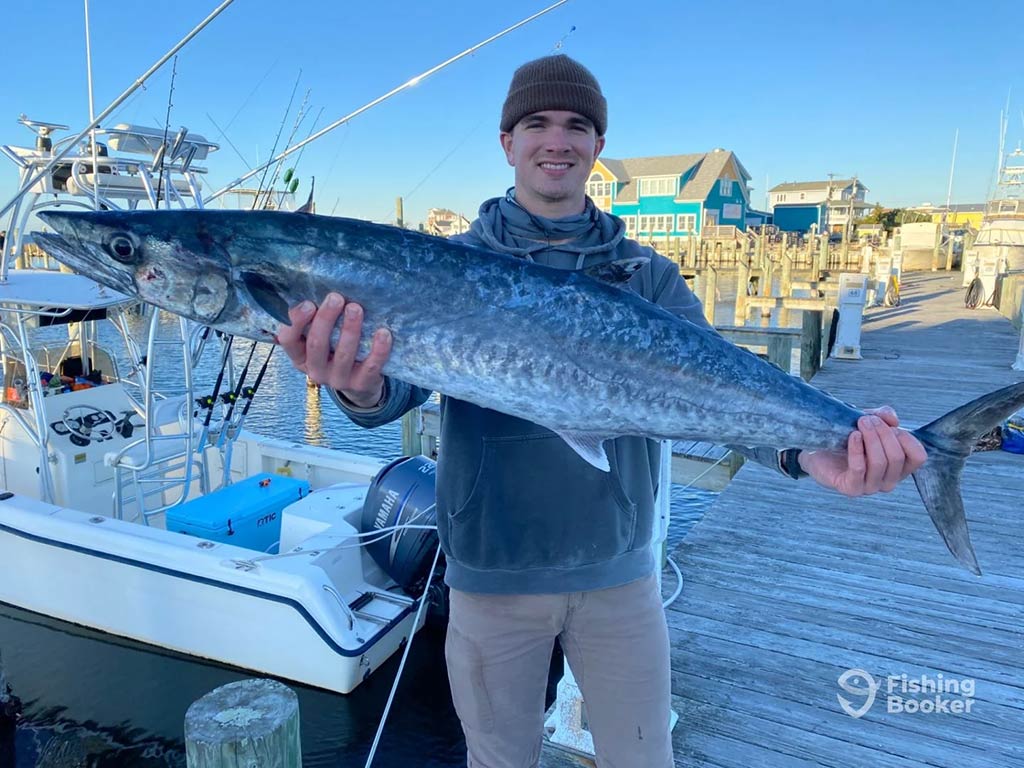
Everyone knows that King Mackerel – aka Kingfish – are a thrill to hook. However, you need to know the right technique to land one of these speedsters. Manteo anglers often go trolling with live or cut bait, working the waters around the inlet.
The Kingfish regulations in Manteo are slightly more generous than for Cobia. Anglers are allowed to keep three fish per day. However, make sure you follow the size limit, which is typically set at 24 inches.
Offshore
Manteo’s offshore waters are a playground for big-game anglers. As you venture into the Gulf Stream, you enter the realm of some of the most impressive predators in the state, if not the whole country! The Outer Banks are your gateway to a bluewater warzone. If you know where to look, that is.
Tuna
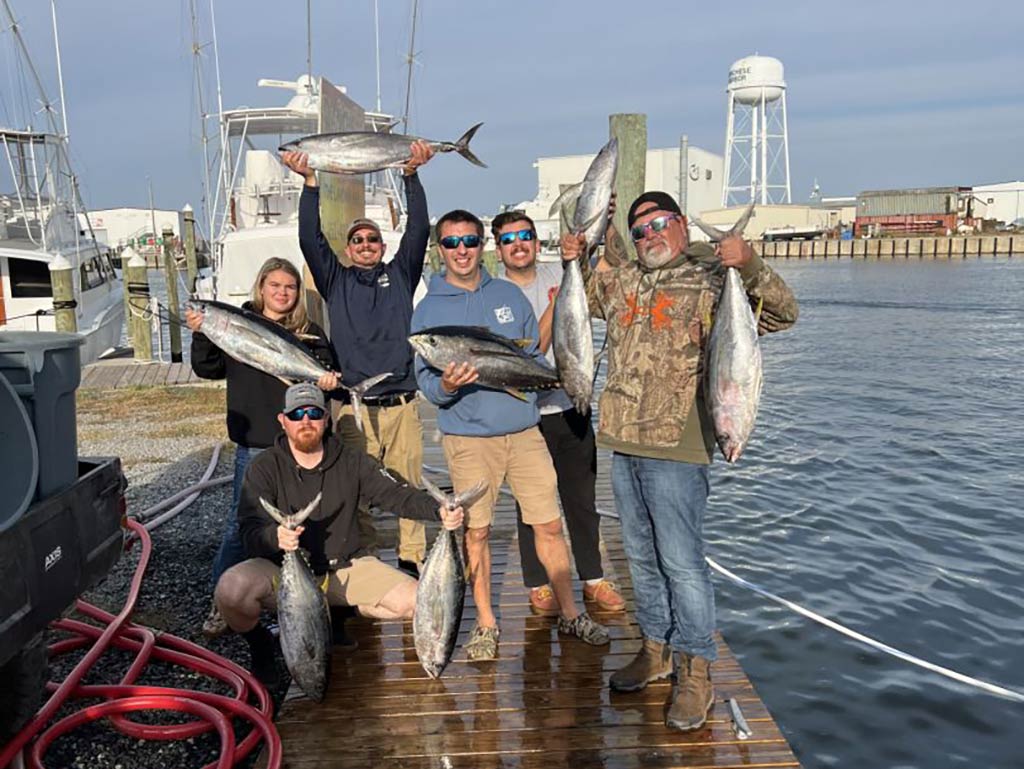
Manteo’s offshore waters provide hotspots for several species of Tuna, especially Yellowfin and Bluefin. In fact, the area is one of the best places around to hunt for Bluefin, with the Gulf Stream’s warm currents as their favorite domain. Ironically, these pelagic predators are actually warm-blooded, which is pretty rare for offshore fish species.
Regulations-wise, you can keep three Yellowfin per person per day, with a minimum size of 27 inches. As for Bluefin, the regulations are pretty complex, as they’re heavily overfished. Make sure to get familiar with the National Oceanic and Atmospheric Administration (NOAA) guidelines in advance.
Marlin
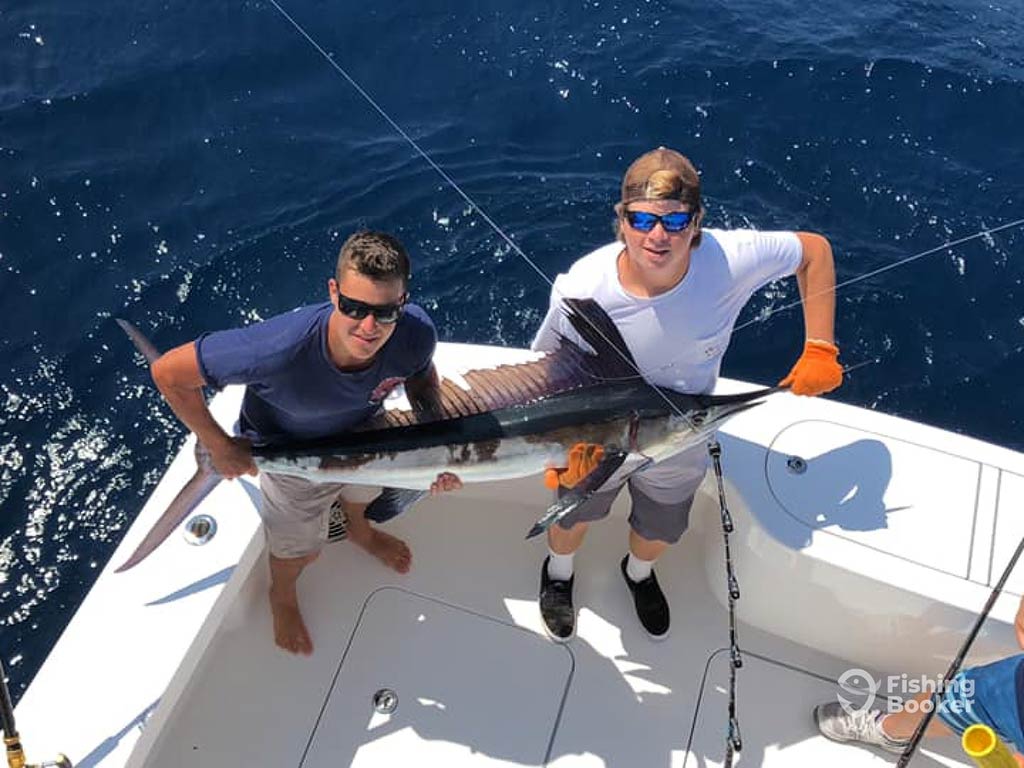
Blue and White Marlin are the biggest celebrities of the offshore fishing world, however. These Billfish species patrol the areas near Manteo around the Gulf Stream, leaping high out of the water and fighting fishermen as hard as they can. Marlins are a dream catch for a reason, after all!
Unless you fish from a Highly Migratory Species (HMS-permitted) vessel, you’ll need to release both Blue and White Marlin back into the water alive and unharmed. If you manage to catch one in the first place, of course!
How to Go Fishing in Manteo
When you’re planning a fishing trip to Monteo, forget about just casting a line and hoping for the best. Your best option is to book a trip with a local guide. A knowledgeable captain will be able to teach you tried-and-true techniques, unique to each fishing setting. Plus, they’ll take you to the most productive spots, from shore to inshore, piers to the deep sea.
Each of these fishing scenarios in Manteo requires a unique combination of gear, tackle, and technique. Let’s discuss the most popular fishing methods in the area:
Shore Fishing
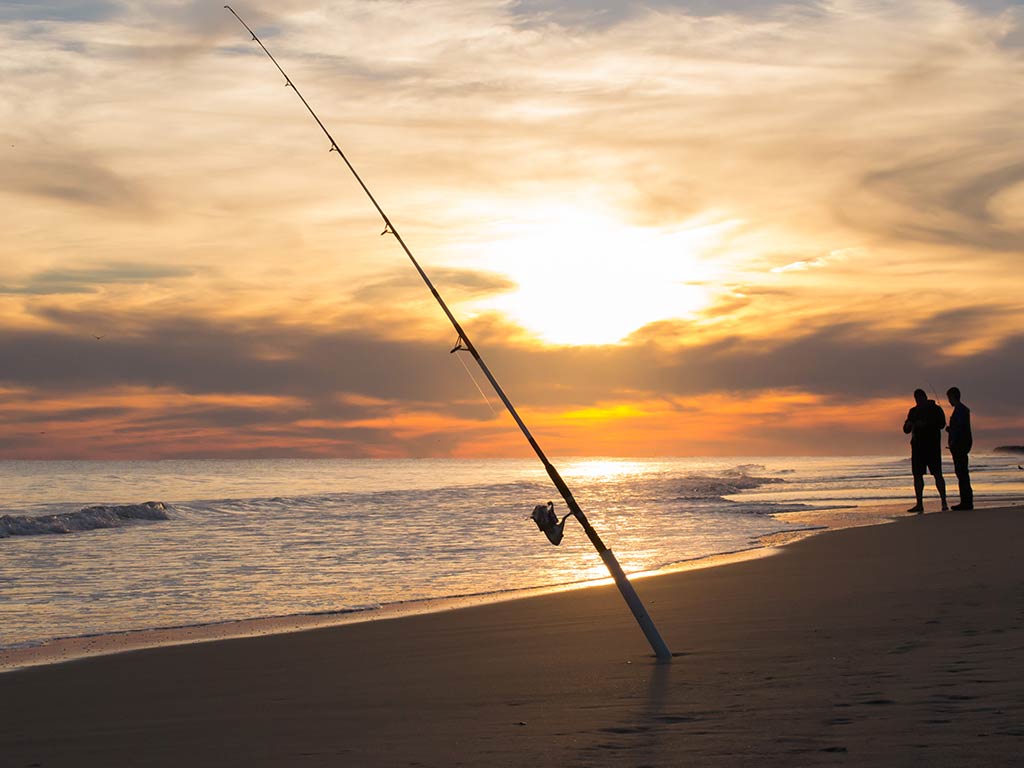
Depending on which shore spot you pick, you’ll need to tailor your setup to the fishing conditions. In general, Redfish, Trout, and Flounder can be caught with a medium-heavy, 7–9‘ rod coupled with a reliable spinning reel loaded with a 10–20 lb braided line offers an excellent combination of distance casting and control.
Circle hooks size 2–4, baited with live shrimp or cut bait can prove irresistible for the inshore species. Remember to bring a sturdy rod holder while you relax and take in the beautiful Manteo views, wherever you are.
Inshore Fishing
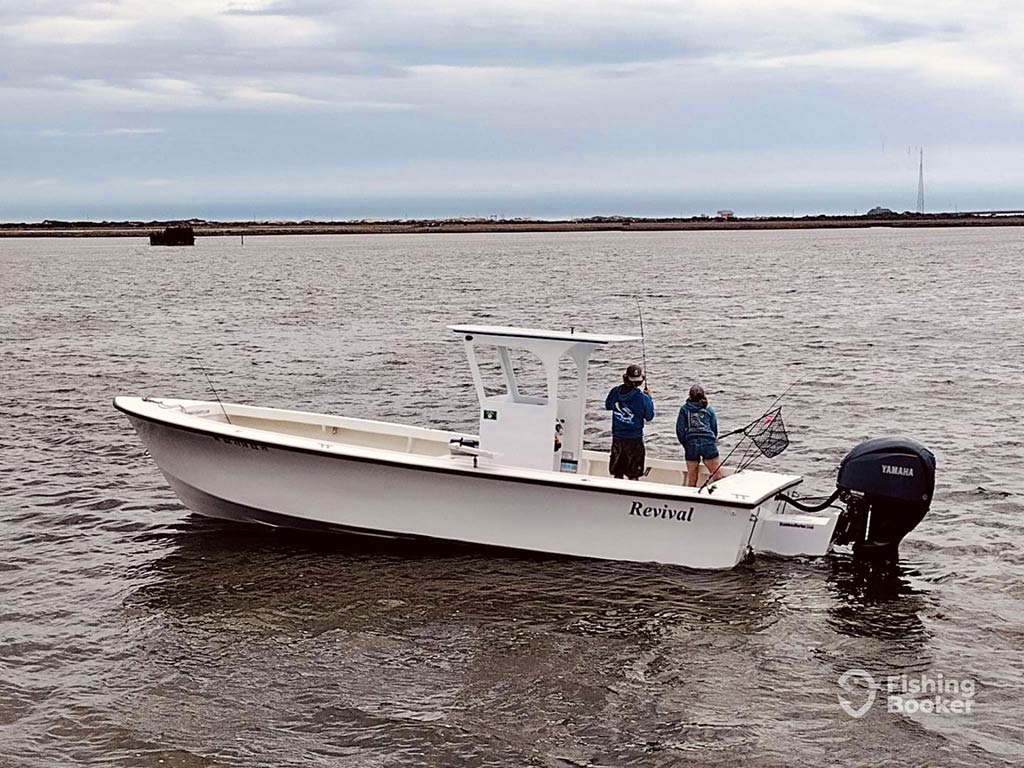
The inshore waters are a good playground for light tackle enthusiasts. A 6–7′ medium-light spinning rod and reel combo, with a 10–15 lb braided line, is the perfect choice for targeting Trout and Redfish. Locals often use a similar setup to target Striped Bass in the freshwater system of the Alligator River and Albemarle Sound, too.
For Reds and Trout, consider packing live bait or popping cork rigs with soft plastics. In turn, soft plastic swimbaits or topwater lures work well for Striped Bass.
Deep Sea Fishing
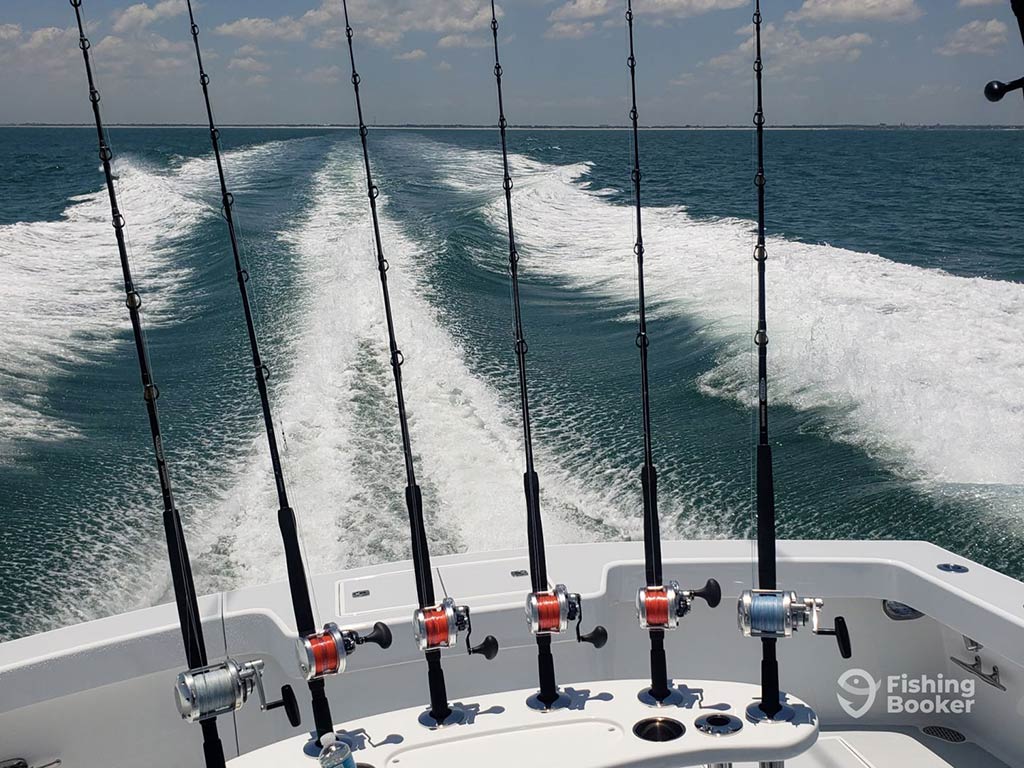
In the endless waters of the Atlantic Ocean, the stakes get bigger, and so do the species. To battle Tuna and Marlin, you’ll need a heavier setup. A stout 5–6‘ trolling rod paired with a high-capacity conventional reel loaded with a 50–80 lb test line is a must for these species.
If trolling is your technique of choice, do as the locals do. Use rigged ballyhoo or squid, or artificial lures for Marlin. Of course, you can always experiment and use heavy jigs for chunking, too.
When can I go fishing in Manteo?
Want more good news? There’s never really a bad time to fish in Manteo. The fish just change with the seasons. In Manteo, the fishing calendar is as diverse as the town itself, offering year-round opportunities that are as exciting as they are rewarding. But let’s take a closer look…
- Spring. This is the time when the fishing scene springs to life. Inshore species, such as Redfish and Speckled Trout, bite well in the inlet and Roanoke Sound. Plus, migratory Cobia grace the nearshore waters.
- Summer. There’s no time for summertime sadness in Manteo. The inshore bite remains as active as ever, especially for surf anglers along the Outer Banks and at Pea Island National Wildlife Refuge. Marlin are the stars of the show, biting offshore, along with Tuna.
- Fall. As the leaves turn golden, Manteo heralds in trophy Red Drum season in the Pamlico and Albemarle Sounds. Meanwhile, King Mackerel and Spanish Mackerel make their run along the coast, promising excellent nearshore trolling opportunities.
- Winter. Manteo’s winter fishing is anything but cold. You can look for Striped Bass as they move into the freshwater systems of the Alligator River and Albemarle Sound. Alternatively, you can still find Bluefin Tuna offshore.
Where can I go fishing in Manteo?
The majority of Manteo fishing charters depart from Pirate’s Cove Marina off Route 64. This is also the starting place for the annual Pirate’s Cove Billfish Tournament, which lures anglers from all over the country.
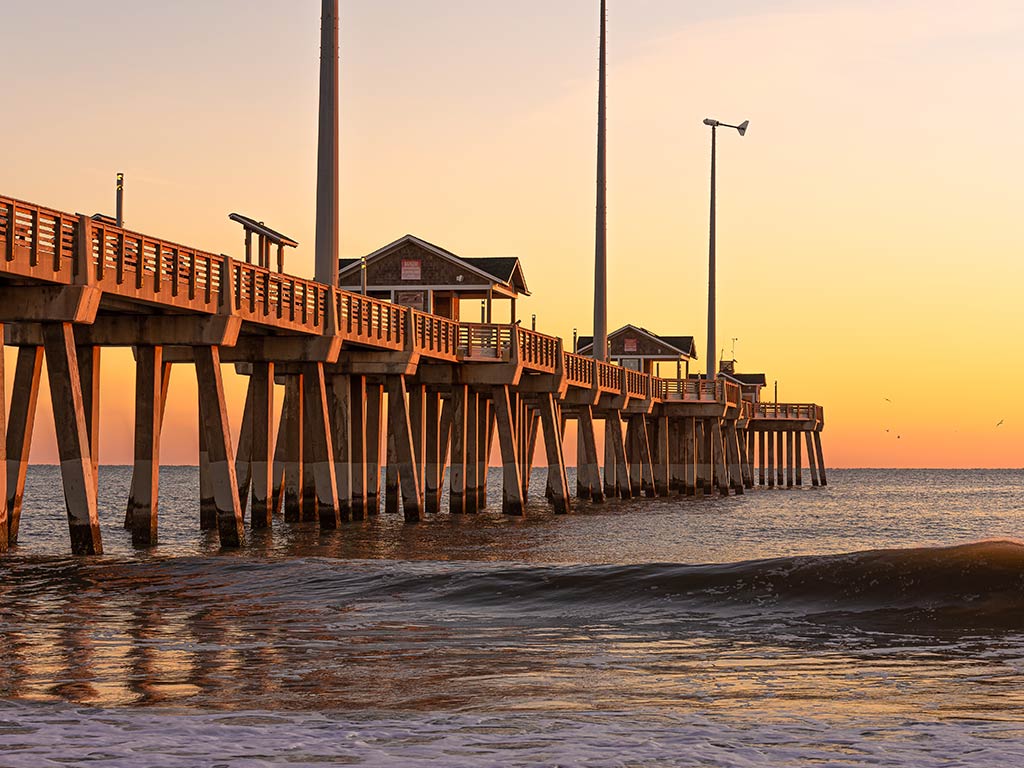
However, you can begin your fishing adventure from other locations, too. There are a lot of fishing grounds to explore, whether you’re after a quick trip inshore, want to wade through the shallow flats, or head out offshore. Here are some of our favorite Manteo fishing spots:
- Oregon Inlet. The mighty Oregon Inlet is a prime spot for inshore, nearshore, and even offshore fishing. It sits at the southern tip of Bodie Island, offering everything from Redfish and Trout to Tuna and Marlin.
- Roanoke Sound. The Roanoke Sound provides the perfect habitat for Redfish, Seatrout, and Flounder thanks to its grassy flats and marshy inlets. There’s hardly a better place for a calm inshore trip in the area!
- Jennette’s Pier. This is a 1,000-foot-long concrete pier in Nags Head, perfect for those anglers who don’t want to fish from a boat. Here, you can catch a cruising Kingfish, Spanish Mackerel, and even Cobia.
- Pamlico Sound. As the largest lagoon on the East Coast, the Pamlico Sound is another fantastic inshore spot. The list of catches includes good old Redfish and Flounder, although you can also find Shrimp, Crab, and Oysters here.
- The Gulf Stream. If Tuna and Marlin are on your list, get ready to ride around 35 miles from Oregon Inlet to the warm waters of the Gulf Stream. The boat ride is worth it for any deep-sea enthusiast.
- Alligator River. The Alligator River is a perfect spot for kayak anglers, offering an array of freshwater and estuarine species. It’s a pretty peaceful spot within an hour’s ride from Manteo.
- Albemarle Sound. Striped Bass, Catfish, White Perch, and Crappie are just some of the species you can hook into in the largest freshwater sound in North Carolina. The Albemarle offers a perfect blend of freshwater fishing with a little saltwater flavor.
- Pea Island National Wildlife Refuge. Head to the refuge just 20 miles from Manteo for some excellent surf and pier fishing opportunities. The area is mostly known for its wildlife and bird-watching, although you can cast a few lines here without too many crowds.
Manteo Fishing FAQs
Manteo: A Tale of Tides, Tackle, and Trophies
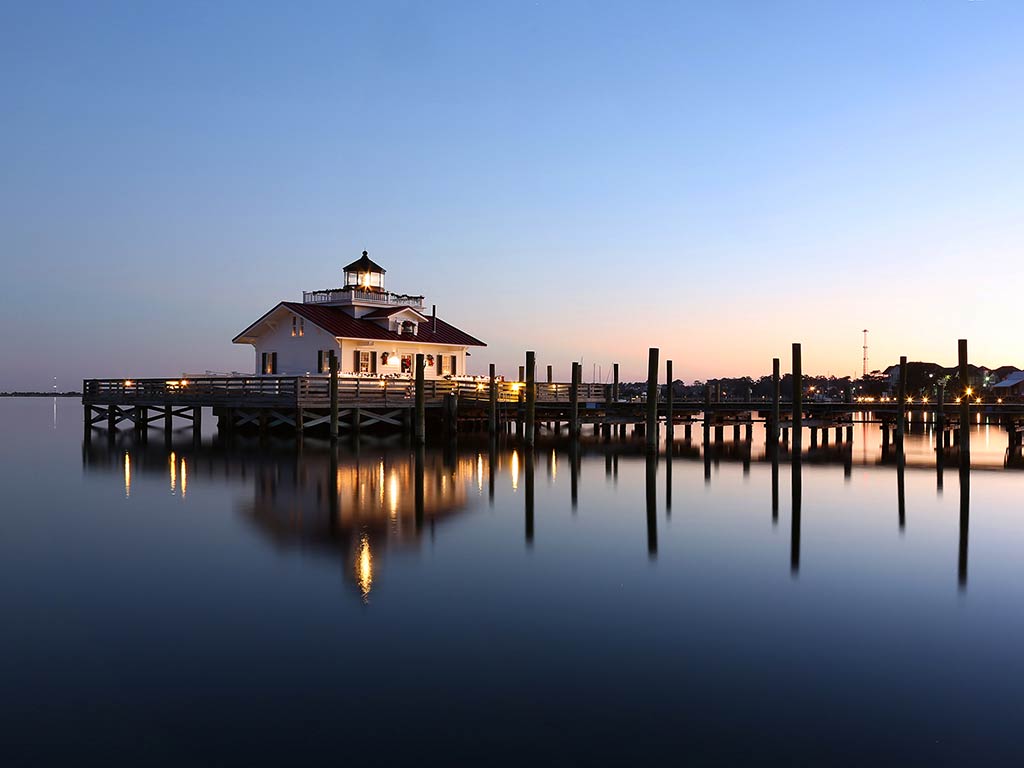
The captivating allure of Manteo fishing is unparalleled. The waters here paint a picture of an angler’s paradise, with a myriad of opportunities that are yet to be discovered. What’s more, these waters are all yours – from serene inshore grounds to bluewater spots. All you need to do is book a charter, prepare your gear, and get ready to cast your line.
Have you ever been fishing in Manteo? What’s your favorite spot and fish species to target? Let’s talk about your experience in the comments below!
The post Manteo Fishing: The Complete Guide appeared first on FishingBooker Blog.
https://ift.tt/YipxTg1
0 Comments
Enregistrer un commentaire